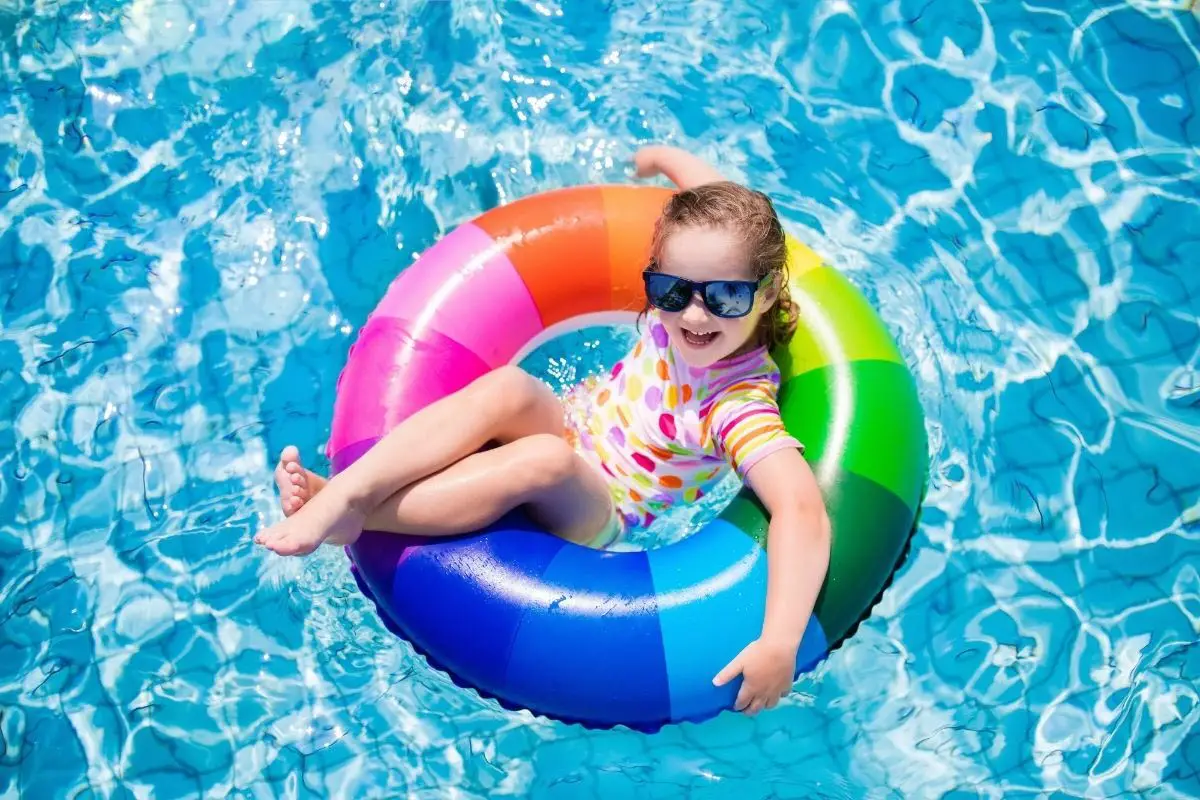Eco-Friendly Pool – 7 tips for a sustainable swimming pool
Nothing screams more like summer than a refreshing splash in the pool (or the beach, for that matter, if you are lucky enough to have one nearby).
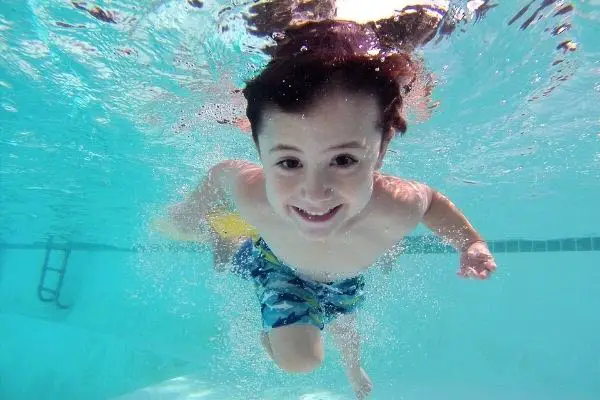
As a parent, having a swimming pool is a real bonus! My kids can spend hours in there and all the energy they burn in the pool means they eat and sleep well. Win-win!
Like anything else in our lives, swimming pools come with an environmental footprint! But there are things we can do to make our splash a bit more sustainable.
In this article, with some help from spa and pool care experts, Poolnomics, I go through some definitions and practical steps in order to have an eco-friendly pool.
What Is An Eco-Friendly Pool?
Given the climate change issues our planet is facing, it’s time to face the fact that our swimming pools aren’t winning any races when it comes to sustainability.
Traditional pools cause damage to the environment because they’re high in energy use, high in water use, and use harmful chemicals to keep them clean.
If we’re to bring about a change to the environment around us, we – myself included – need to start by changing our attitude to water.
That’s where eco-friendly pools come in.
An eco-friendly pool is one that’s been designed and constructed with conservation in mind.
This means the conservation of water, energy, and pool chemicals by helping your pool to run as efficiently as possible.
Essentially, eco-friendly pools are designed to reduce your household’s carbon footprint and save money at the same time.
Why Make an Eco-Friendly Pool?
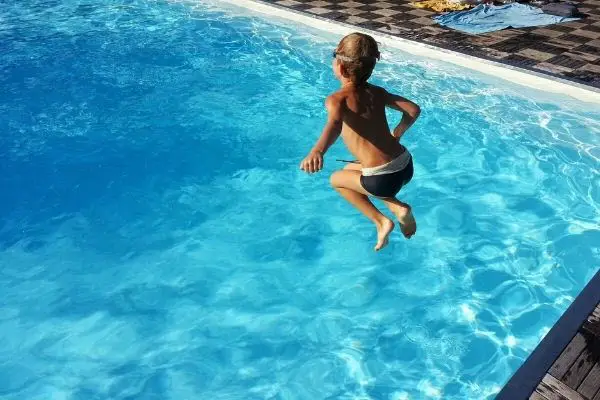
The obvious answer to this is we need to move towards eco-friendly and sustainable living on all fronts and minimizing the environmental impact that your swimming pool has is easier than you might think.
On top of that, there could be nice surprises for your bank account too! In fact, an eco-friendly swimming pool is likely to cost a lot less in the long run.
Over the last few decades, environmental consciousness has begun to seep into the swimming pool business, and there have been several significant developments that are paving the way towards environmentally friendly swimming pools.
How to Make an Eco-Friendly Pool? 7 tips for you!
Embarking on a new project or overhauling an already existing pool can be a daunting prospect. Making the changes you’ll read about below will help your swimming pool to become healthier for both your swimmers and the planet.
Here are our top 7 tips to make an eco-friendly pool:
1. Use a Pool Cover
The amount of water it takes to fill your swimming pool is not the only issue in terms of sustainability and costs. The average swimming pool can lose around 32,000 liters of water a year through evaporation.
Evaporation is caused by the sun and sped up by the wind, making a pool cover the obvious choice in combating it. Pool cover lessens the evaporation of your pool water by up to 95%.
In the case of heated pools, wind also causes the pool water to cool which forces your heater to work harder and use more energy, so a pool cover also decreases energy usage by keeping in the heat.
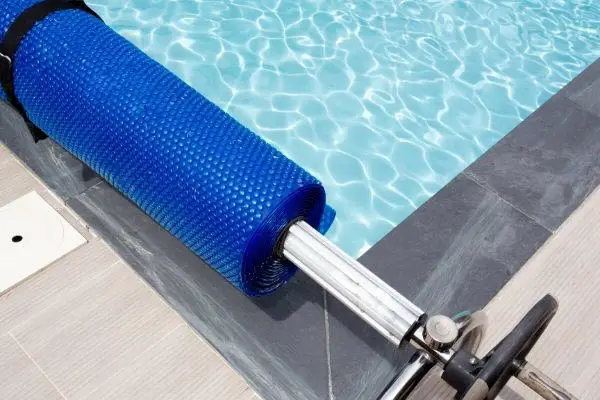
Another byproduct of using a pool cover is a cleaner pool. A cleaner pool requires fewer chemicals and less filtration!
2. Use a Solar Pool Heater
The latest stats suggest that 18% of domestic electricity consumption is used to heat our water. To make matters worse, heating water with electricity is also the most expensive way to do it.
Another problem is that electricity requires the use of fossil fuels and natural gases, so the overall impact on the environment is enormous.
Once you invest in solar heating, you will start to get that money back in the form of free energy, and solar heaters usually pay for themselves within two years.
Solar heating is a way to the environment while simultaneously lowering your electricity bill.
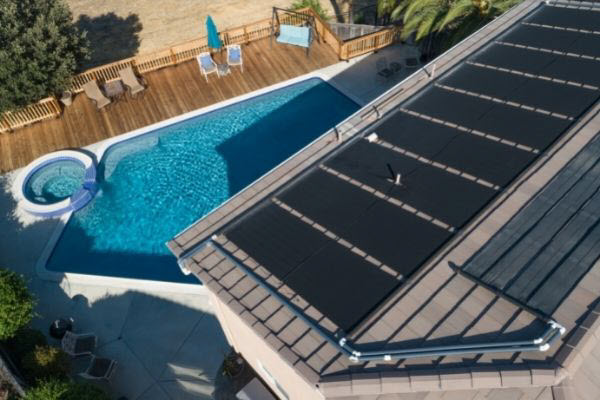
3. Use a Pool Pump Timer
Pool pumps are second only to air conditioners in domestic electricity costs, making them both costly and environmentally UNfriendly. A pool pump timer instantly cuts your electricity usage.
Instead of running your pump continuously, you set the timer to run it at certain intervals between 6-12 hours, which decreases electricity usage and prolongs the life of the pump itself.
4. Use a Variable Speed Pool Pump
Unlike the inefficient single-speed pump, variable-speed pumps change the speed at which the pump runs periodically, thereby reducing energy consumption and energy costs.
Faster isn’t always better, and variable speed pumps allow you to run your pool at a lower speed, allowing for optimum cleaning and increasing the lifespan of your equipment.
5. Use Fewer Chemicals
When it comes to chemicals, less is more! Using fewer chemicals isn’t just a cost-saving move.
When chemical-filled water evaporates it causes the production of greenhouse gases and draining chemical-filled water damages the waterways.
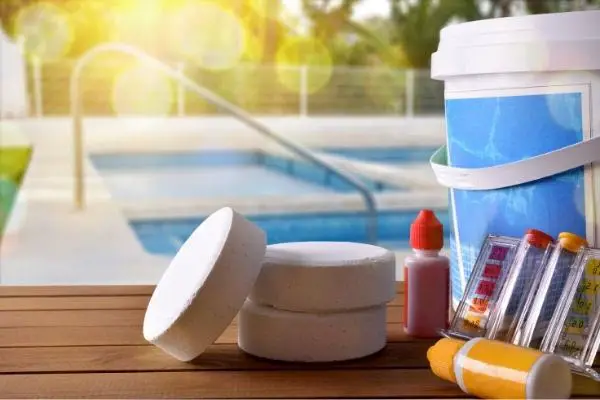
The process of manufacturing chlorine also leads to mercury emissions. By decreasing chlorine usage, you’re able to decrease your running costs and make your pool more eco-friendly.
An easy way to do this is by simply checking your chlorine levels. Maintaining them properly reduces the need to shock your pool with high doses of chlorine. Adding bromine to your pool also allows you to use less chlorine.
6. Fix Your Pool Leaks
Leaks in your pool cause steady water loss and require consistent filling which means that you’re continuously wasting a valuable resource AND costing yourself money.
Pool leaks and the drop in water that they cause can also damage your pump and cause chemical imbalances.
Another costly side effect of a leaky pool is the structural damage that it can cause, making leak detection and fixing a no-brainer.
7. Convert to a Natural Pool
A natural pool is a chemically free and eco-friendly version that uses all-natural organic matter to filter the water in the pool, leaving it completely clarified.
It’s a chemical-free pool that uses the principles of nature to filter out harmful microorganisms.
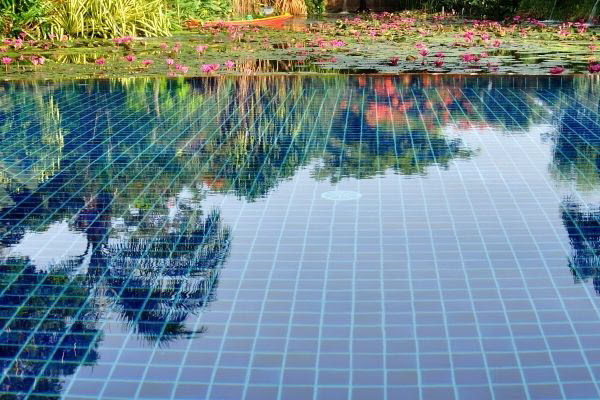
What you’re left with is a pool that cleans itself! The decrease in both energy consumption and chemical use causes a significant decrease in your costs too.
Final Thoughts
A swimming pool might be at the top of the wish list for many homeowners, but there is no need for your private swimming hole to be a drain on both your bank account and the environment.
With some effort and an original outlay of cash, it’s possible to turn your water and electricity guzzling pool into an oasis of tranquility, one that leaves you with a clear conscience, and even clearer water.

